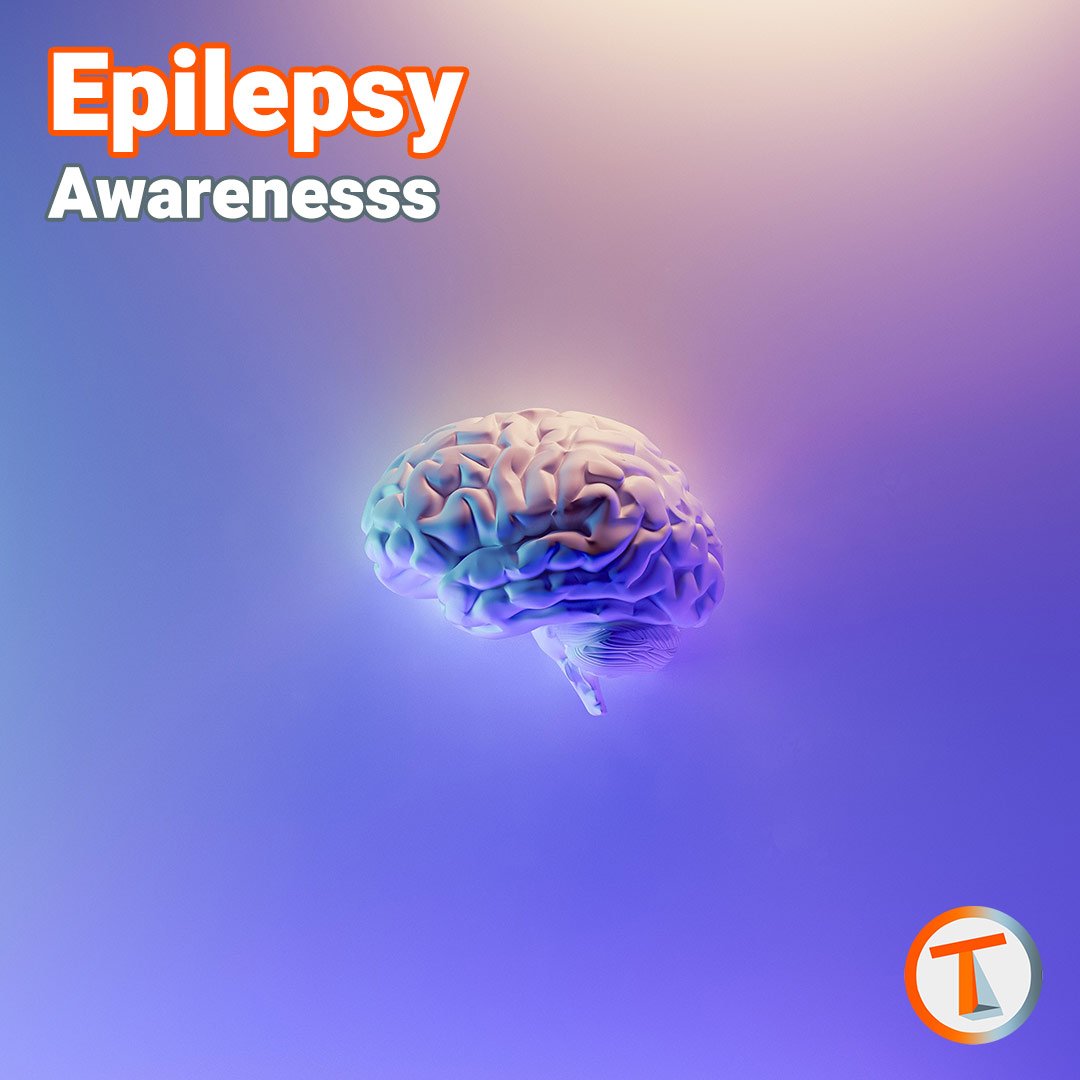Epilepsy Awareness
Epilepsy affects more than 65,000,000 people around the world annually. As the 4th most common neurological disorder, it is estimated that roughly 1 in 26 people will be diagnosed in their lifetime. A seizure occurs when there is a sudden surge of electrical activity in the brain, but experiencing a seizure doesn’t mean someone automatically is epileptic. Epilepsy occurs when nerve cell activity in the brain becomes disrupted. The disruption can occur as a result of a genetic disorder or a brain injury.
How is Epilepsy Diagnosed?
According to Epilepsy.com, the following factors help distinguish seizures from seizure disorders:
The type, frequency, and severity of seizures
The area of the brain affected
The cause of epilepsy
How a person responds to treatment
Underlying brain abnormalities that are present
Medical illnesses, such as infections, can trigger a seizure. Seizures initiated by an underlying cause that leads to a seizure are referred to as provoked seizures. Abnormal blood sugar, having a fever, experiencing a head injury, drug or alcohol withdrawal, a negative reaction to prescription medications, or a stroke can provoke a seizure.
Aside from provoked seizures and epilepsy, someone can be diagnosed with a psychological condition psychogenic nonepileptic seizures. This condition is often linked to individuals who experience post-traumatic stress disorder and have a history of sexual, physical, or emotional abuse.
Different Types of Seizures
There are two groups of seizures; generalized seizures and focal seizures. Generalized seizures affect both sides of the brain. These include Absence seizures (petit mal seizures) and tonic-clonic seizures (grand mal seizures). Symptoms typically include rapid blinking, staring into space, crying out, losing consciousness, muscle spasms, or falling to the ground. Focal seizures affect only one side of the brain. Focal seizures are broken down into 3 categories: simple focal seizures, complex focal seizures, and secondary generalized seizures. Simple focal seizures cause twitching or affect your senses, like experiencing a strange taste or smell. Complex focal seizures will cause confusion and can last up to a few minutes. Secondary generalized seizures begin in one part of the brain, then spread to both sides.
Treatments for Epilepsy
Although diet and lifestyle changes can have a huge impact on your overall health, and thereby your brain’s health, it may not be enough to stave off epileptic episodes. The ketogenic diet focuses on decreasing carbohydrate intake and increasing fat consumption and has shown great promise in managing seizure activity. However, the ketogenic diet is incredibly strict, and it is recommended to work with a nutritionist or dietician to ensure that daily nutritional values are met.
Medications
Taking FDA-approved medications can be an effective treatment, but, unfortunately, studies show up to 40% of patients do not respond to the medications (epilepsybehavior.com). Participating in medication trials could lead to the discovery of a medication that helps, and aids in providing data to scientists developing the medications.
CBD extracted from medical marijuana is pending FDA approval following a story involving a young girl named Charlotte. Charlotte lives with Dravet syndrome, a severe form of genetic epilepsy. She would have many seizures a day, but CBD oil has been shown to be an effective treatment in managing her seizures.
Vagus Nerve Stimulation
Extracranial neurostimulators, such as Vagus nerve stimulation (VNS), were approved in 1997 and have shown a 44% reduction in seizures over a 3-year period. VNS stimulates the vagus nerve intermittently throughout the day which, in turn, stimulates the entire brain. Another type of neurostimulation is brain-responsive neurostimulation (RNS system). RNS is more invasive than VNS, but it provides stimulation to the exact area in the brain affected by seizures. RNS has been shown to reduce seizures by 60% over 3-years. The last form of neurostimulation is deep brain stimulation. DBS implants electrodes in the thalamus to achieve regular stimulation directly in the brain. Unlike RNS, the electrodes do not have to be placed exactly where the seizures occur.
Recently, doctors have recognized a type of autoimmune epilepsy where the patient produces antibodies that attack parts of the brain. Autoimmune epilepsy cannot be controlled with antiseizure medications alone and typically include steroids, plasma exchange, or other medications to round out the patient’s treatment plan.
Surgical Intervention
Developments in brain surgery have shown great promise to individuals who experience life-disrupting seizures. Up to 80% of patients who receive intracranial EEG surgery become seizure-free. Laser surgery destroys the seizure focus with heat. This type of surgery is best when the seizure’s location is deep within the brain.
Mindfulness
Relaxation techniques, vitamin and herbal supplements, acupuncture, and essential oil are homeopathic methods used to manage symptoms of epilepsy. It is recommended to discuss any unconventional methods of treatment with your medical team.
Lastly, remaining cognizant of actions or behaviors that may trigger an epileptic episode will improve an individual’s overall quality of life. Lacking quality sleep, experiencing stress, or indulging in self-destructive behaviors, such as using alcohol or drugs, could trigger a seizure. 3D films, virtual reality, and flashing lights could trigger a seizure in those with photosensitive epilepsy.
Living with Epilepsy
Innovations in the medical field for epilepsy are on the rise, but it can still be a cumbersome process to find a plan that works. Diagnosis and treatment plans take time and are often trial and error. The occupational therapists on our team at Tilton’s Therapy can help individuals with epilepsy gain independence while navigating life with this often disruptive neurological disorder. We work with you and your family to prepare for potential dangers that are present daily; such as driving, bathing, cooking, or simply walking upstairs. Learning to identify risks will become a natural part of life for those living with epilepsy. Our occupational therapists can meet you where you’re comfortable - in your home and on your time.
Related Resources
Managing Epilepsy in Children: https://tiltonstherapyfortots.com/resources/managing-epilepsy-in-children
Self-Care Cards: https://tiltonstherapy.com/resources/self-care-cards
Self-Care Bingo: https://tiltonstherapy.com/resources/self-care-bingo
Movement for Mental Health: https://tiltonstherapy.com/resources/movement-for-mental-health
Additional Resources
https://utswmed.org/medblog/epilepsy-treatments/
https://www.epilepsy.com/stories/neurostimulation-treatment-epilepsy
https://www.osmosis.org/answers/seizure-precautions
https://www.epilepsy.com/what-is-epilepsy/seizure-types
https://www.medicalnewstoday.com/articles/317922#avoiding-triggers

